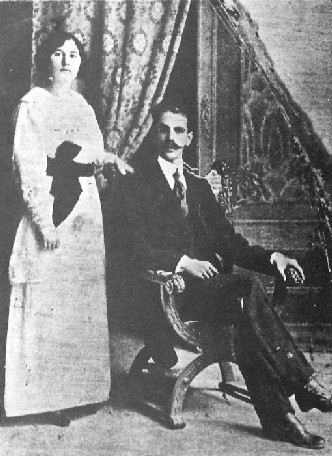|
Canaima (novel)
''Canaima'' is a Venezuelan novel. It was written by Rómulo Gallegos and published in 1935. Plot The Orinoco jungle is the main character and at the same time the reason behind all of the other characters' actions. The struggle against nature and yearning for riches, dominion and power are the main themes in the novel. ''Canaima'' represents a bitter struggle against caudillism. Its author depicts the jungle from an ideological standpoint, which translates into his characters' development. Marcos Vargas, returns to Ciudad Bolívar after his studies in Trinidad, finally settling by the waters of Yuruari river. Characters * Marcos Vargas: A teenager with an adventurous spirit. After studying in Trinidad, he returns to the Venezuelan jungle to help his mother, who lives in bankruptcy, by starting a cart business. Although he has a noble heart, he's sometimes impulsive, giving into his macho complex. After tainting his hands in blood, unsure in his romantic relationship and his fa ... [...More Info...] [...Related Items...] OR: [Wikipedia] [Google] [Baidu] |
Rómulo Gallegos
Rómulo Ángel del Monte Carmelo Gallegos Freire (2 August 1884 – 5 April 1969) was a Venezuelan novelist and politician. For a period of nine months during 1948, he governed as the first freely elected president in Venezuela's history. He was removed from power by military officers in the 1948 Venezuelan coup. Rómulo Gallegos is considered the most relevant Venezuelan novelist of the 20th century, and a prominent figure in Latin American literature. Early life and writings Rómulo Gallegos was born in Caracas to Rómulo Gallegos Osío and Rita Freire Guruceaga, into a family of humble origin. He began his work as a schoolteacher, writer, classical music enthusiast, and journalist in 1903. His novel '' Doña Bárbara'' was first published in 1929, and it was because of the book's criticisms of the regime of longtime dictator Juan Vicente Gómez that he was forced to flee the country. He took refuge in Spain, where he continued to write: his acclaimed novels '' Cantaclaro'' ... [...More Info...] [...Related Items...] OR: [Wikipedia] [Google] [Baidu] |
Gloria Marín
Gloria Méndez Ramos (19 April 1919 – 13 April 1983), better known as Gloria Marín, was a Mexican actress. She was considered a celebrated female star of the Golden Age of Mexican cinema. During her career, Marín appeared in about 100 films and television series. She received an Ariel Award nomination for her leading performance in the 1948 film '' Si Adelita se fuera con otro''. Biography Gloria Méndez Ramos was the daughter of dancer María Laura Ramos Luna (who used the artistic name Laura Marín) and businessman Pedro Méndez Armendáriz, and a cousin of actor Pedro Armendáriz. She began her career at age six, alongside her mother who ran a theater company in Mexico City. She also worked later in the Mayab and in the carpa of Santa María la Ribera where the comedian Joaquín Pardavé offers her first opportunity in the cinema. She debuted in the film ''Los millones de Chaflán'' (1939). At age 15, she married the official Arturo Vargas (forwarding agent). She m ... [...More Info...] [...Related Items...] OR: [Wikipedia] [Google] [Baidu] |
Novels By Rómulo Gallegos
A novel is a relatively long work of narrative fiction, typically written in prose and published as a book. The present English word for a long work of prose fiction derives from the for "new", "news", or "short story of something new", itself from the la, novella, a singular noun use of the neuter plural of ''novellus'', diminutive of ''novus'', meaning "new". Some novelists, including Nathaniel Hawthorne, Herman Melville, Ann Radcliffe, John Cowper Powys, preferred the term "romance" to describe their novels. According to Margaret Doody, the novel has "a continuous and comprehensive history of about two thousand years", with its origins in the Ancient Greek and Roman novel, in Chivalric romance, and in the tradition of the Italian renaissance novella.Margaret Anne Doody''The True Story of the Novel'' New Brunswick, NJ: Rutgers University Press, 1996, rept. 1997, p. 1. Retrieved 25 April 2014. The ancient romance form was revived by Romanticism, especially the histori ... [...More Info...] [...Related Items...] OR: [Wikipedia] [Google] [Baidu] |

